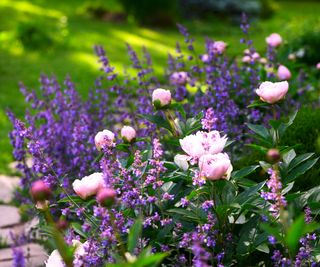Looking for deer-resistant perennials? If you’ve had a bad experience with deer in your garden, you’re not alone. Many gardeners have fallen foul of these inquisitive garden visitors, and lost a few of their favorite plants along the way! And while several plants are listed as deer-proof perennials, you’ll often find that if a deer is hungry enough, nothing is off limits…
That said, there are some deer-resistant perennial plants that are less likely to attract Bambi. So if you are looking to create a more deer-resistant garden, this is definitely a checklist you should be considering for your future perennials. And for those of you who want to make the landscape a bit more aesthetically pleasing, there are even some deer-resistant perennial flowers. So read on to learn about eight deer-resistant perennials that stand the best chances of surviving your next deer visit.
(Image credit: Mkovalevskaya / Getty Images)
Choosing the Most Deer-Resistant Plants
Before diving into my recommendations, let’s be clear. No plant is completely safe from a hungry deer. Heck, when I’m starving I’ve been known to gobble up some pretty questionable food items – so why wouldn’t a deer? The other thing is that even if a deer doesn’t eat a particular plant in one person’s yard, there’s no guarantee the deer will eschew the same plant in someone else’s yard.
Still, there are ways to tip the odds in your favor, at least. What you are looking for are more deer-resistant plants. These plants tend to have unpleasant textures like spiny or tough or ones that are highly aromatic. A couple in this roundup are also deer-resistant flowering shrubs, where height or bulk can restrict access to critical areas. These are pretty good bets if you are looking for the most deer-resistant perennial plants.
1. Ligularia
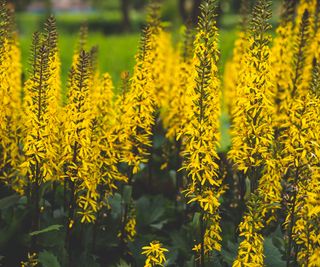
(Image credit: Olga Ozik / Shutterstock)
Ligularia, also called leopard plant, is one of my favorite perennials for dappled shade. I have two varieties growing on my covered patio which give the area an exotic (almost tropical) feel, with large, green leaves followed by yellow spires (the Rocket) or even bigger maroon foliage accented by yellow/orange flowers (Britt Marie Crawford). Deer generally ignore this blooming perennial. However, slugs and snails find it enticing, so you might be swapping one nibbler for another. Ligularia can be grown in USDA zones 4-8 with moist, well-draining soil. Plant in dappled sun or shade with morning exposure.
2. Pigsqueak
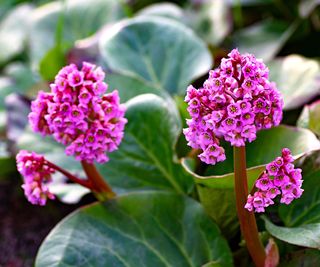
(Image credit: Elena Gr / Shutterstock)
This blooming perennial gets bonus points just for the adorable name. It gets this name from the sound the foliage makes when rubbed between the fingers. Pigsqueak (bergenia) grows equally well in sun or shade, provided it has rich, moist yet well-draining soil. It can be grown happily in USDA zones 4-9, where its spring blossoms set off by the leathery, glossy green leaves delight the grower almost as much as its name.
3. Hakone
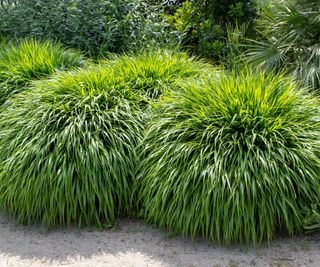
(Image credit: Svetlana Zhukova / Shutterstock)
Love the look of grasses, but don’t have the sun exposure for most varieties? Try growing deer-resistant hakone (Hakonechloa macra) grass, which thrives in USDA zone 5 and up. Also known as Japanese forest grass, this clumping grass thrives in partial shade in low-growing individual mounds. In the genus of bunchgrass, some varieties of hakone have variegated leaves, while others brilliantly chartreuse blades. In areas of hot summers, grow in full shade. Otherwise, this perennial grass requires moist, rich and well-draining soils.
4. Catmint
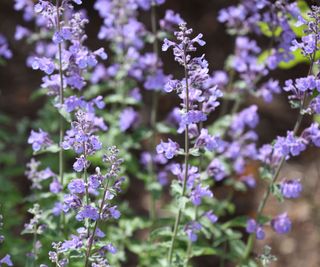
(Image credit: Tracy Immordino / Shutterstock)
Nepeta catmint (‘Cat’s Pajamas’) plants are true blue bloomers – deer-resistant perennials that bloom all summer long. Nepeta can be grown in USDA zones 3-8 in full sun to partial shade. This drought and heat-tolerant perennial not only deters deer, but it attracts butterflies and hummingbirds with its long lasting indigo blooms. You’ll find that caring for catmint is a relatively straightforward task. Nepeta does well on its own in the garden or in containers, and really wows when planted en masse.
5. Peony
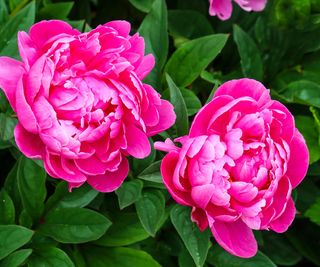
(Image credit: Dmitry Demkin / Shutterstock)
Peonies are notable for their stunning spring blooms, but did you know these delicate beauties are some of the most deer-resistant perennials you can grow in your garden? Peonies like Karl Rosenfield and other cultivars can be grown in USDA zones 3-8 in full sun to partial shade. In bloom for four-six weeks, peonies are spurned by deer and rabbits, while being attractive to butterflies. Gorgeous cut flowers, peonies can be planted alone in containers or en masse in beds or borders.
6. Orange Butterfly Weed
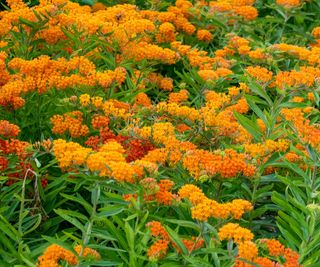
(Image credit: Barbara Smits / Shutterstock)
Orange butterfly weed (Asclepias tuberosa) is a species of milkweed which, as its name suggests, is extremely attractive to butterflies, but not deer. It prefers sun to partial sun, and when mature it is drought tolerant. You’ll find that growing butterfly weed results in large clusters of bright orange flowers in summer. It can be grown in USDA zones 3-9 in a variety of soils, provided they are moist but well-draining. The striking blossoms give way to fluffy large seed pods which, if allowed to break free, can become invasive.
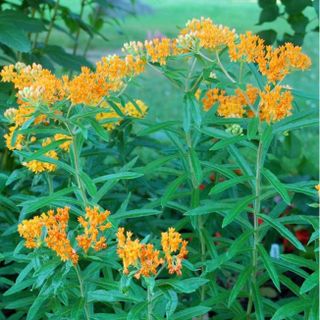
This richly toned plant from Green Promise Farms is reassuringly off-putting to deer intruders. However, its cheerful umbels of butterfly-friendly blooms will attract monarchs all summer long.
7. Jack-In-The-Pulpit
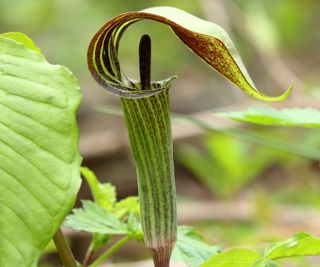
(Image credit: Melody Mellinger / Shutterstock)
An incredibly unique looking plant, Jack-in-the-pulpit is a woodland flower (now cultivated) of North America. The Jack is the columnar bloom or spadix of the plant, accompanied by the sheath or pulpit, followed by a cluster of red berries in late summer. Only reaching a couple of inches (5cm), Jack-in-the-pulpit has the ability to change its sex, is pollinated by flies and gnats, and thrives in rich, medium-wet soil in partial or full shade. It can be grown in USDA zones 4-9a.
8. New England Aster
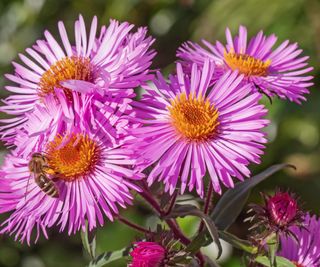
(Image credit: Thorsten Schier / Shutterstock)
New England asters are late bloomers, enlivening the garden in late summer to early fall with their hot pink blooms. Resistant to powdery mildew, asters are valuable plants for bees and butterflies but the deer aren’t interested in them. Asters can be grown in USDA zones 3-9 in moist but well-drained soil. You can grow New England asters in sun to partial sun, where they are important nectar sources for migrating monarchs.
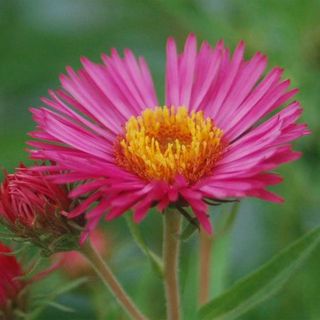
Aster ‘Alma Potschke’
It might not be top of a deer’s wish list, but ‘Alma Potschke’ is a stunning perennial if you are keen to attract butterflies and birds. Its distinctive hot pink blooms will add zing and cheer to summer displays.
This article features products available from third party vendors on the Gardening Know How Shop.


